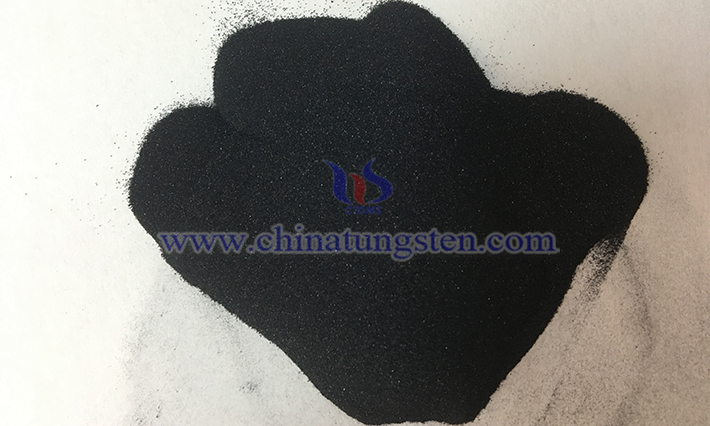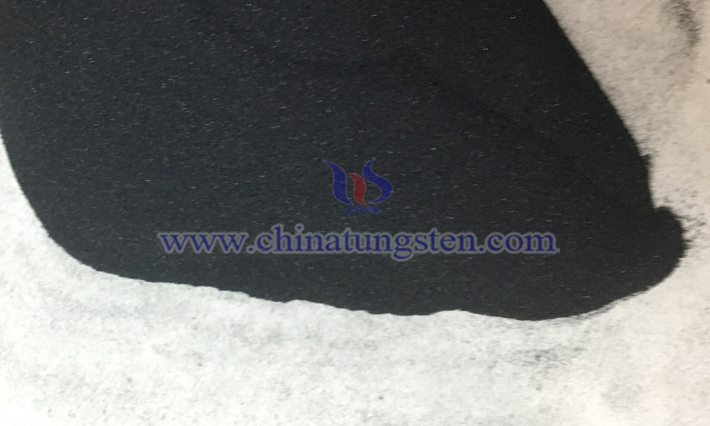Blue Tungsten Oxide
- Details
- Category: Tungsten Information
- Published on Wednesday, 14 May 2025 11:26
Blue tungsten oxide (BTO), a typical tungsten oxide (WO₃₋ₓ), also known as tungsten blue oxide, is a deep blue compound with mixed valence states of tungsten (VI) and tungsten (V). It is an inorganic compound composed of 20 tungsten atoms and 58 oxygen atoms, characterized as an oxygen-deficient/vacancy tungsten oxide. Its English name is Blue Tungsten Oxide (abbreviated as BTO), with a chemical formula of WO₂.₉₀ or W₂₀O₅₈. Note: Depending on calcination conditions, the phase composition of blue tungsten oxide varies, but it is primarily composed of WO₂.₉₀ or ammonium tungsten bronze (ATB) as the main phase.

Microstructure: Blue tungsten oxide retains the morphological appearance of ammonium paratungstate (APT), with surfaces showing varying degrees of fragmentation and cracks. Large particles exhibit distinct angular features, formed by the aggregation of small cubic units. Its molecular structure consists of WO₆ octahedra, made up of 8 tungsten ions and 24 oxygen ions.
Physicochemical Properties: Blue tungsten oxide appears as a blue or deep blue powder, with a measured density of 7.15 g/cm³ and an X-ray density of 7.16 g/cm³. It exhibits high chemical reactivity, strong reducibility, weak oxidizing ability, and notable photochromic and electrochromic effects.

Production Methods: The preparation methods for blue tungsten oxide are similar to those for purple tungsten, including the sealed calcination of tungsten trioxide, hydrogen reduction of APT, and direct synthesis. However, the process parameters differ slightly, mainly in the concentration and flow rate of the reducing gas.
Applications: Blue tungsten oxide is used to produce lower-valence tungsten oxides, metallic tungsten powder, tungsten carbide powder, and tungstates. Additionally, it serves as an oxygen scavenger in vacuum equipment, a color-changing material for smart windows, and a gas-sensing material.
- Chinatungsten Online: www.tungsten-oxide.com
- CTIA GROUP LTD: en.ctia.group
- Tungsten News & Price: www.ctia.com.cn
- Molybdenum News & Price: news.molybdenum.com.cn
- Tel.: 86 592 5129696; Email: sales@chinatungsten.com



 sales@chinatungsten.com
sales@chinatungsten.com